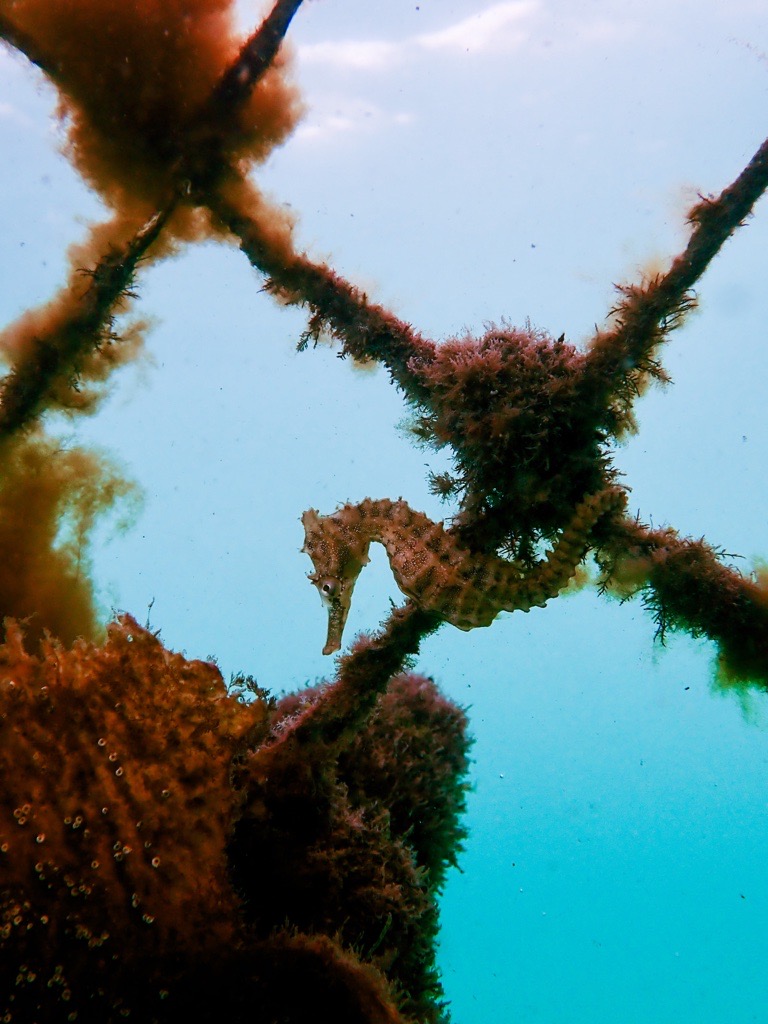
A University of Queensland and Sea World Foundation research collaboration hopes to better understand and protect the endangered White’s seahorse (Hippocampus whitei).
The White’s Seahorse is a long-snouted, colour-changing, 16-centimetre-long seahorse.
UQ PhD candidate Rowan Carew said their population has been dwindling dramatically in recent years.
“Recent data from New South Wales have shown a White’s seahorse population decline of about 90 per cent in just six years,” Ms Carew said.
“And, in June this year, the seahorse was unfortunately added to Queensland’s endangered list.
“This frighteningly stark decline has been linked to a loss of critical habitat, the soft coral Dendronephthya australis.
“The loss of this form of soft coral, as well as seagrass bedding, could existentially challenge this species, but it’s sadly occurring more and more thanks to a changing climate and human disturbance.
“Seahorses are incredibly sensitive creatures, with highly selective habitat choices and limited ability to move, so they’re very susceptible to these disturbances.
“So, with this hands-on data collection project, we’re hoping to find out just how these last White’s seahorse populations can best survive and thrive.”
The project will involve conducting many surveys in multiple locations, including Moreton Bay, to get an estimate of the population size, distribution, and habitat preferences of the endangered species.
Most scientific research on the species has been conducted in New South Wales, meaning comprehensive data from Queensland is much needed.
Tissue collection and sequencing for population genetics will also be conducted to determine the relatedness between Queensland and New South Wales populations.
Potential future work could involve habitat restoration, breed-and-release programs, and development of artificial structures for Queensland seahorses.
UQ’s Associate Professor Karen Cheney, Ms Carew’s supervisor on the project, said that protecting the species was critical, and that it was more unique than most.
“Hippocampus whitei is endemic to Australia, meaning it is not found anywhere else in the world,” she said.
“These seahorses have an incredible ability to change their body colouration, based on both their mood and what environment they are living in for camouflage.
“While this ecological research is moving forward, my research team, the Marine Sensory Ecology Group, will also be studying how and what they see, as they’re visually guided predators and have a highly specialised visual system.
“This aspect of their behaviour is being investigated further by another UQ PhD student, Stephanie Heyworth.
“As they use their vision for many aspects of their day-to day life, we’re hoping to use their visual system to understand more about their ecology and inform future conservation work.”
UQ would like to thank its partner Sea World Foundation for their support to this project, providing staff time and boat use to conduct surveys.
Media: Rowan Carew, r.carew@uq.net.au, +61 467 240 938; A/Prof. Karen Cheney, k.cheney@uq.edu.au, + 61 410 126 716; Faculty of Science Media, science.media@uq.edu.au, +61 438 162 687.



